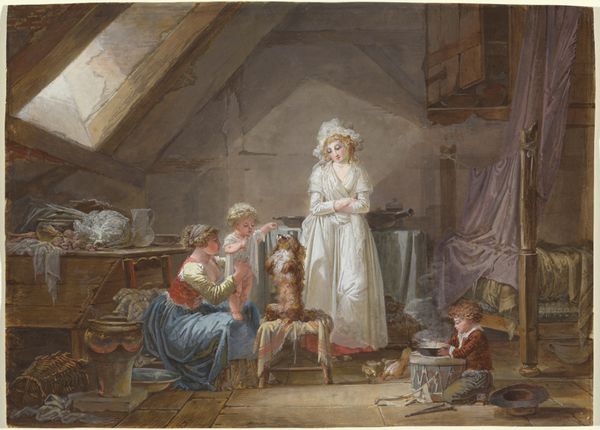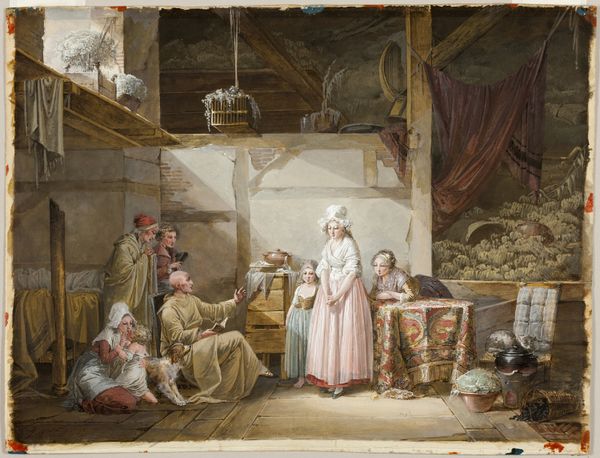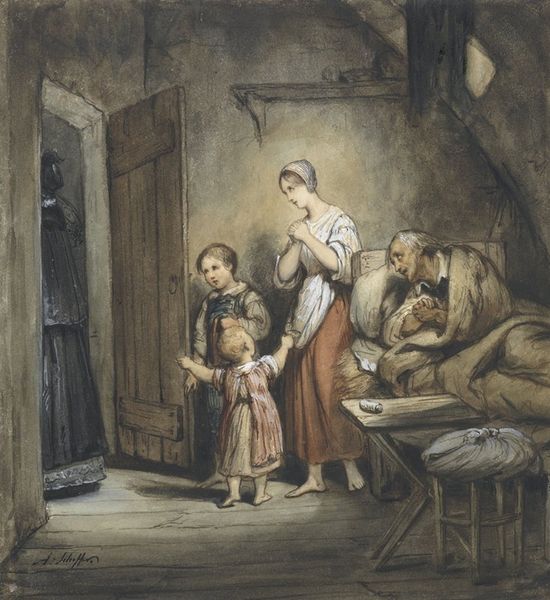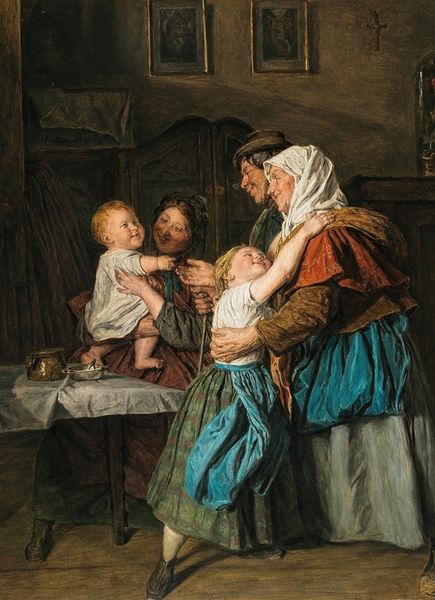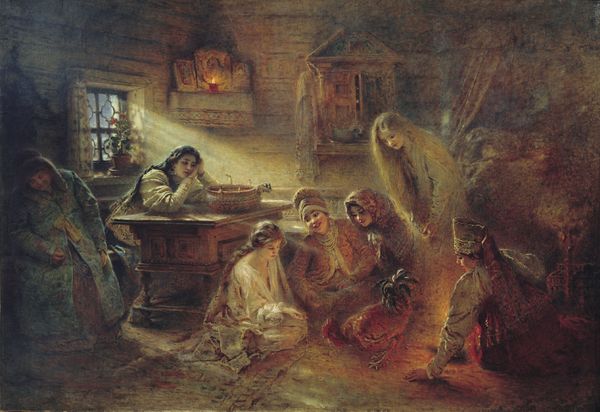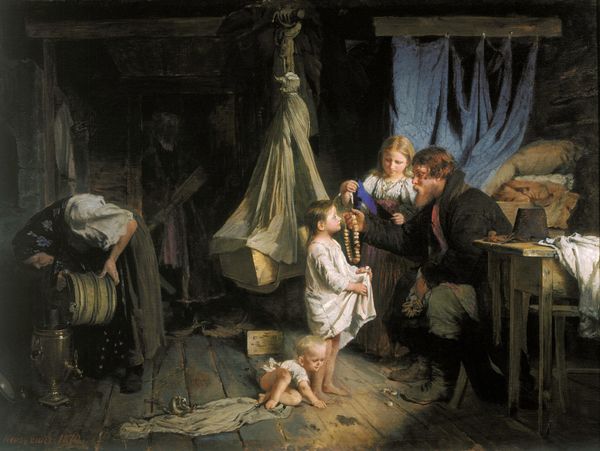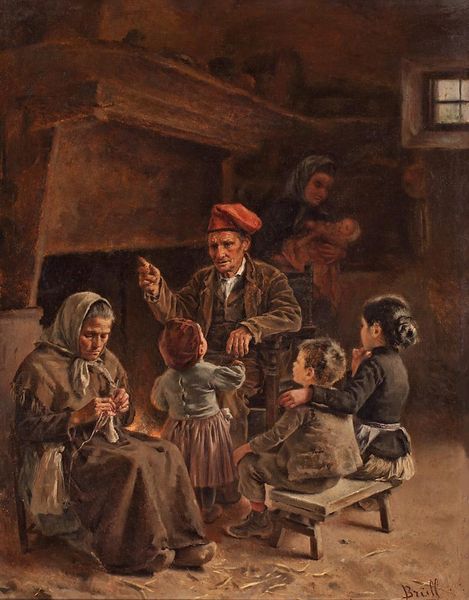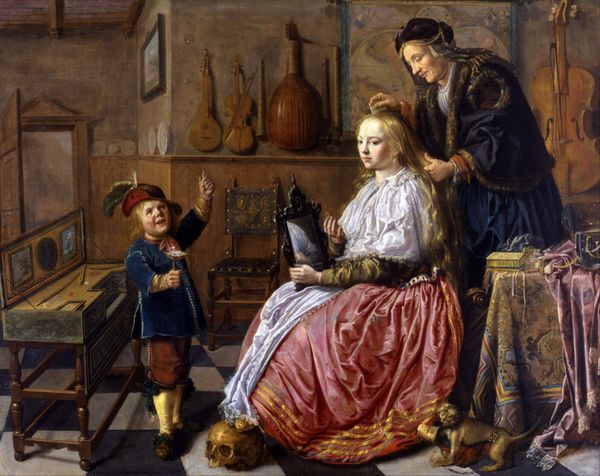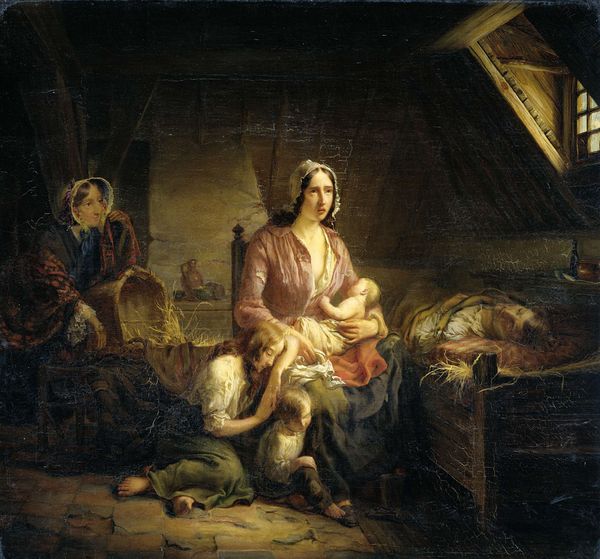
painting, oil-paint
#
portrait
#
narrative-art
#
baroque
#
painting
#
oil-paint
#
figuration
#
historical fashion
#
costume
#
genre-painting
#
history-painting
#
academic-art
#
italian-renaissance
#
mixed media
#
realism
Copyright: Public domain
Curator: Welcome, everyone. We're here today to explore Pasquale Celommi's oil painting titled "Piatto Rotto," or "Broken Plate". Editor: My first impression is that it’s a raw depiction of domestic life. The somber palette amplifies the obvious tension—you can practically feel the child’s distress and the mother's frustration radiating outwards. Curator: Absolutely. Note how the artist uses the light to highlight the three figures, creating a visual hierarchy. The young child, eyes covered, becomes the focal point, almost centered among the grounding figures of the mother and grandmother. Observe, too, the composition—how the artist arranges the subjects within the interior setting to guide our eyes through the narrative. Editor: It's hard not to consider the social dynamics at play. The painting subtly brings forth ideas around generational differences, and perhaps hints at economic struggles conveyed through the rough texture of clothing and very basic setting. How would a broken plate affect this family and what impact would such a mistake hold for a young child facing reprimand? Curator: Precisely, it reflects aspects of realism blended with a narrative, Baroque-esque sensibility. There’s also a subtle academic polish. Note Celommi’s attention to details—observe the meticulously painted kitchenware near the oven, juxtaposed with the shattered remnants of the plate in the foreground. Each item seems deliberate, and loaded with symbolic meaning that drives the narrative of family tensions. Editor: Yes, these details serve not only to establish scene but to hint at how social norms affect the lived experiences of people separated by power and position in an Italian household of this era. Considering the work's ties to realism, I’m most drawn to these layered complexities, where seemingly trivial moments hold significance as signifiers of everyday life and unspoken rules within households and communities. Curator: Ultimately, Celommi prompts a deeper consideration of pictorial and contextual interactions. He encourages us to engage in conversation around both visual elements and the historical implications imbedded in those observations. Editor: A seemingly simple domestic scene offers a profound mirror, reflecting intricate relationships that still reverberate today. Thank you for your company!
Comments
No comments
Be the first to comment and join the conversation on the ultimate creative platform.

